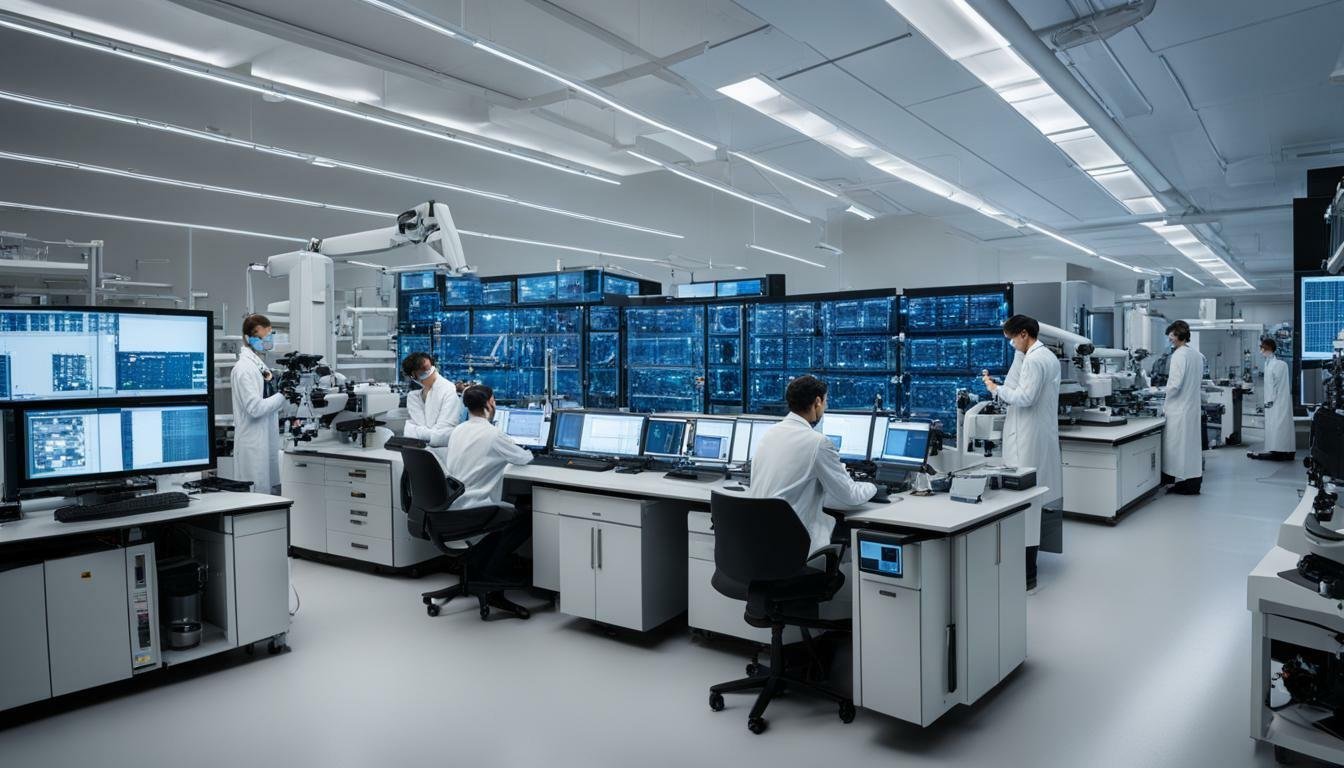Welcome to a journey through America’s cutting-edge research facilities, where groundbreaking studies, innovative technology, and future-focused science are taking place. Step into a world of state-of-the-art technology, advanced research infrastructure, and innovative research labs that push the boundaries of scientific exploration. From high-tech scientific facilities to cutting-edge amenities, these institutions are fueling advancements in various fields. Join us as we explore the incredible research facilities that drive innovation in America.
State-of-the-Art Technology and Innovative Research Labs
Step into the world of advanced technology and innovation as we explore the state-of-the-art technology and cutting-edge research labs in America’s leading research facilities. These facilities are at the forefront of scientific discovery, equipped with modern research equipment and top-notch resources.
Within these advanced laboratory facilities, researchers have access to cutting-edge research amenities that enable them to push the boundaries of knowledge and make groundbreaking discoveries. From high-resolution imaging systems to advanced computational tools, these labs provide researchers with the tools they need to conduct experiments and analyze data with precision and efficiency.
Collaboration and interdisciplinary work thrive in these innovative research labs. Scientists from different fields come together to tackle complex problems, combining their expertise to find creative solutions. This collaborative environment fosters synergy and accelerates the pace of research and development, leading to transformative advancements in various scientific disciplines.
Transforming Research through Technology
Technology plays a pivotal role in transforming the research landscape, and these cutting-edge research facilities are at the forefront of this transformation. They embrace emerging technologies and leverage the power of automation, artificial intelligence, and big data analytics to revolutionize the scientific process.
The integration of modern research equipment and innovative technologies allows researchers to conduct experiments with higher precision, collect and analyze data more efficiently, and gain a deeper understanding of complex phenomena. This state-of-the-art technology empowers researchers to tackle grand challenges and address pressing societal issues, from finding cures for diseases to developing sustainable energy solutions.
In conclusion, America’s leading research facilities are hubs of innovation and technological advancements. They provide researchers with advanced laboratory facilities, cutting-edge research amenities, and access to top-notch resources. Through their state-of-the-art technology and innovative research labs, these institutions are driving transformative discoveries and pushing the boundaries of scientific knowledge.
Advancements in Research Infrastructure
Dive into the world of advanced research infrastructure as we explore the cutting-edge facilities and state-of-the-art research centers that play a pivotal role in shaping the future of scientific discovery in America.
Within America’s cutting-edge research facilities, advanced research infrastructure is at the heart of groundbreaking research. These high-tech scientific facilities are equipped with state-of-the-art technology and top-of-the-line resources, providing scientists and researchers with the tools they need to push the boundaries of knowledge.
From innovative research labs to advanced laboratory facilities, these research institutions are committed to fostering an environment that cultivates curiosity and innovation. The cutting-edge research amenities available ensure that researchers have access to modern research equipment and cutting-edge technologies, enabling them to explore new frontiers and pioneer groundbreaking discoveries.
State-of-the-art research centers are also a defining feature of America’s research infrastructure. These centers serve as hubs of collaboration, bringing together experts from various fields to tackle some of the world’s most pressing challenges. With their advanced facilities and collaborative approach, these research centers facilitate cross-disciplinary research and accelerate the pace of scientific advancements.


